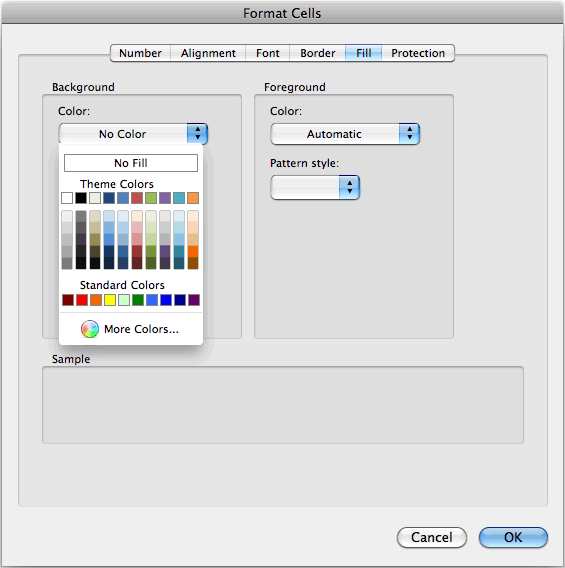Microsoft Excel 2007 Graph Pattern Fill Background
Excel Formula Based on Cell Background Colour . For the purposes of this example the formula will show Yes or No depending on the cell colour. But you could simply replace this part with whatever calculation you want to run depending on whether it is true or false. Guide to Creating an Excel Formula Based on Cell Background Colour.
It's easy to conditionally format an Excel worksheet, but not a chart. VBA can be used, but this article shows how to conditionally format charts without VBA.
MS Paint, the first app you used for editing images, will probably be killed off in future updates of Windows 10, replaced by the new app Paint 3D. Microsoft lists. Tired of erasing holes in your graph paper or having to start over from scratch? Here's an easy way to create your own custom graph paper in Excel. This updated tutorial shows how to combine XY Scatter charts with Area charts to fill the area under or between plotted lines in your chart.
Step 1. First of all we need to create a custom Excel function. Creating a custom excel function will then return a numeric value based on the cell’s background colour. In Excel each background colour has it’s own unique numeric value that corresponds to that colour. We need this value for the formula to work. To create a function, you need to insert a module within the visual basic environment. Once you have done this, type the following text to create the custom function. Function Cell. Colour(Irow As Integer, Icol As Integer) As Long.
Pattern Fill Add-In In xl2007 the chart feature of using pattern fills was deprecated. For backward compatibility the functionality was included in the new charting. Excel Formula Based on Cell Background Colour ” Pingback: Tweets that mention Excel Formula Based on Cell Background Colour You can add emphasis to selected cells in an Excel 2007 worksheet by changing the fill color or applying a pattern or gradient effect to the cells. If you’re using. Wondering if there is a way to actually use excel slicers while in PowerPoint Presentation mode. I figured out how to incorporate the slicers into the PPT but when. Pattern Fill Add-In for PowerPoint In PowerPoint 2007 the chart feature of using pattern fills was deprecated. Alcance Y Limitaciones De Un Proyecto De Software. For backward compatibility the functionality was.
Cell. Colour = Cells(Irow, Icol). Interior. Color. Index.
End Function. Step 2. Now the function is written we can switch back to the worksheet. Next step is to get the numerical value of a background colour. It is important to note here that when typing the formula we will be referencing a cell by its numerical value, for example, 4,4 instead of D4.

It has to be done this way because of the function. So, click in cell D4 and change its background colour to yellow. Once you have done this type the following formula into cell E4, then push enter. Note the 4,4 instead of D4.=Cell. Colour(4,4)The result of this formula will give the numerical value for the background colour yellow. The value should be 6.
Step 3. Ok, great stuff. We now have the numerical value for the background colour. Let’s assume you wish to run a formula in cell E4, and the formula is based upon the background colour in cell D4 (or 4,4) being either yellow or not yellow. You can overwrite the formula written earlier in cell E4 and replace it with the following code and then push return. Note the “If(Cell. Colour(4,4)=6”. This is essentially saying “if the background colour in cell D4 is yellow”=If(Cell.
Colour(4,4)=6. You get this because the background is yellow, so the answer is true. If you were to change the background colour then your answer would be “Not Yellow”. So we now have a formula based upon whether a background colour is yellow.
But you could also perform a calculation instead of simply displaying “Yellow”. Whatever calculation you want to perform needs to replace the “Yellow” section in the formula. This is because this the argument if value is true. You can also count the number of cells that contain black font, or any other colour. Please do provide feedback on my articles, or whether you know of a easier way to do this.
You might also find helpful in Excel..